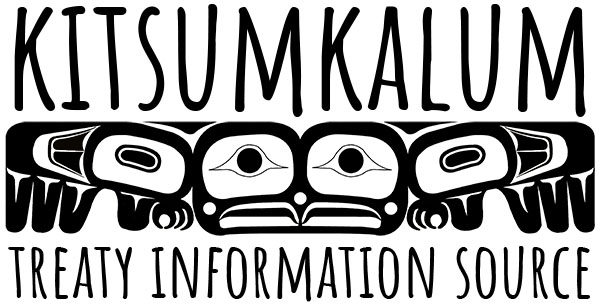Frequently Asked Questions
If you are a Kitsumkalum member, please log in to the Members’ Area to access additional FAQ information.
Ask A Question
Q: Where is Kitsumkalum in the Treaty Negotiation Stages?
A: In the six-stage BC Treaty Commission Treaty negotiation process, Kitsumkalum is currently in Stage 5: Negotiation to Finalize a Treaty.
Q: What is a Final Agreement?
A: It is a Treaty. It is legally binding. The Agreement-in-Principle tells us what will likely be in the treaty, but it is not a legal document. Kitsumkalum is building a treaty that is, and can be adapted and renewed regularly over time.
Q: What is the difference between a Final Agreement and a Treaty?
A: The term Final Agreement means the same as treaty. In fact, we prefer to call it a treaty because it will be reassessed every ten years.
Q: What is the difference between the Agreement in Principle (AIP) and the Treaty?
A: An AIP does not have as much detail as the Final Agreement and is not legally binding. Some topics are only negotiated after the AIP is approved. The AIP lays the groundwork for a Final Agreement. Once approved by the members, a Final Agreement is legally binding.
Q: Why Treaty?
A: Negotiating a treaty offers one path towards self-governance and getting Kitsumkalum out from under the Indian Act. Like other Native groups, the Kitsumkalum were self-governing long before European contact. The Indian Act was passed in 1876 without the consultation or consent of the Native people. The Indian Act was developed to control almost every aspect of Native life and continues to dictate the way Native people are governed on-reserve. Self-governance will replace the Indian Act. It gives us the right to make laws, similar to the laws that provinces are able to make. It is also about setting up a government that is designed by the Kitsumkalum people and approved by us. With self-governance, we will have more freedom to choose. The Kitsumkalum people will be responsible for establishing a Constitution that will guide self-government.
Q: What is the Indian Act?
A: The Indian Act was developed to control almost every aspect of Native life and continues to dictate the way Native people are governed on-reserve. The Canadian Government passed the Indian Act in 1876 without consulting or getting consent from Native people.
Q: What’s in it for the people - us?
A: Increased opportunities, ownership, improved services, control over your future, control of your education, ability to govern ourselves, freedom from the constraints of the ‘Indian Act’….
Q: What happens if the Final Agreement is not approved?
A: If the Treaty is taken to a Referendum vote and if the result of the vote is less than 50% in favour of the Final Agreement, then the Final Agreement will be rejected and the Kitsumkalum Treaty negotiations will come to an end. The BC Treaty Commission has no process for continuing negotiations if Stage 5 fails.
Q: What is different about our Treaty (as opposed to the Nisga’a)?
A: The Nisga’a Agreement and our AIP cover many of the same topics. This is because both Canada and BC were involved in the Nisga’a negotiations and the issues are very similar. The big issue between the parties, – settling the land claim, is the same. We have had the opportunity of learning from the Nisga’a.
We have also been able to make some improvements of the Nisga’a Final Agreement. For example, the land and cash we receive is more on a per capita basis than the Nisga’a received. Also, the Nisga’a did not include “gathering rights” in their Final Agreement, and this is has been included in our AIP. There is also no “Revenue Sharing” in the Nisga’a Final Agreement, and we intend to include a Revenue Sharing Chapter in our Final Agreement.
There are also numerous areas where the drafting has improved. For example, under the Nisga’a Wildlife Chapter, the Nisga’a must provide to governments each year, a plan of what species they intend to harvest. We fought very hard against this and now our AIP does not have that requirement.
We have also heard that there were some difficulties when it came time to implement the Nisga’a Treaty, and we will be meeting with the Nisga’a to learn from them about these and other issues.
Q: What are the pros and cons of the Treaty?
This is a large question and short answers do not provide sufficient information. Individuals should read all the materials available and make up their own minds. However, most fundamentally, the Treaty will provide:
- full ownership of large amounts of lands and greater access to resources
- continued access to our traditional territory
- newer and better fiscal arrangements including a cash transfer
- a huge opportunity to fundamentally change the way we govern ourselves under our own laws and constitution.
The biggest downside of the Treaty is the loss of the Section 87 tax exemption and, for some, the “comfort” of living under the Indian Act.


